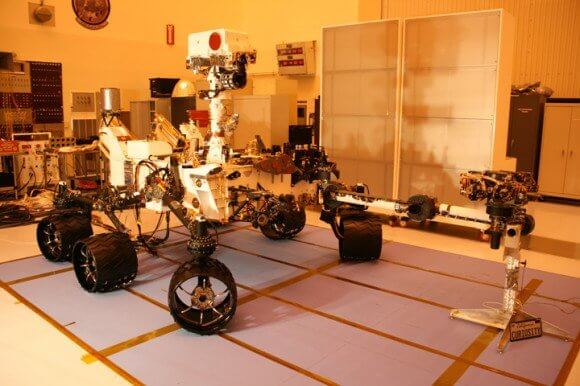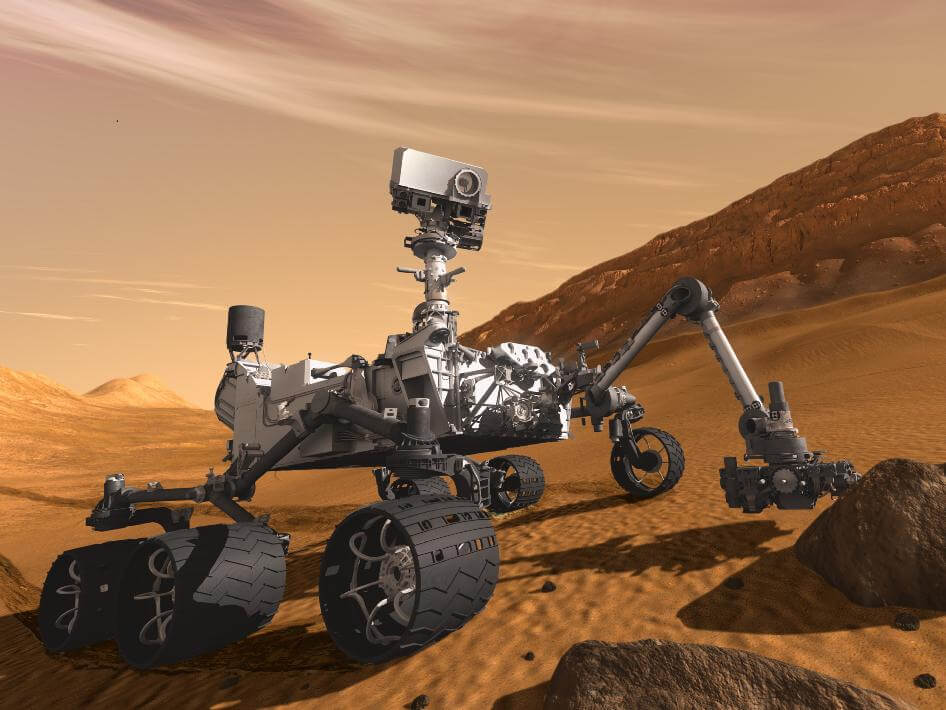The Curiosity spacecraft is scheduled to take off today (November 26 at 17:05 p.m. Israel time) to Mars

In less than a week, the most sophisticated robotic vehicle will be launched on a journey to the Red Planet where it will search for evidence of life that might have existed on Mars. The scientists are eager to begin the journey of the Curiosity vehicle after seven years of ants' work to assemble it.
Curiosity, which until now was known as MSL - Mars Science Laboratory, has greater capabilities than any other vehicle launched from the surface of any planet. Mars is the most Earth-like planet in the solar system and therefore serves as the primary target for the study of the beginning of life beyond our planet.
Curiosity is stored in aerogel ahead of its launch on an Atlas 5 rocket at the Florida Space Center ahead of its launch on the morning of November 26.
"MSL is ready to go": says Doug McCuistion, director of the Mars Research Program at NASA Headquarters in Washington. "We are excited about what is in store for us."
"Curiosity will look for signs of life, but it is not a mission to look for life, it is equipped with the most innovative scientific instruments."
This is a machine weighing 900 kg and 1.80 meters high, an engineering marvel" said McCuiston. The vehicle contains mainly scientific equipment developed in the USA, but also systems from France, Canada, Germany, Russia and Spain.
|"Curiosity is halfway through the two-decade strategic plan for Mars exploration that will bridge the scientific and technological gap from the previous decade to the next.
MSL contains improvements from the experience we gained in the previous and current missions to Mars." said. "The advanced technology of a mission as well as the science that will be achieved through it will advance us towards a mission to return samples and finally land humans on Mars."
The vehicle, which is the size of a car, is expected to reach Mars in August 2012 and land in a crater not far from high mountains whose soil is layered. Some of these mountains are 5 kilometers high. The diameter of Gale Crater is 154 km.
The landing site was chosen because it offers many locations with different types of geological environments, some of which may preserve evidence of the development of microbial life, if it ever formed.
Gale Crater is supposed to contain clay and hydrated minerals formed during the eras when water flowed on Mars, billions of years ago. Water is an essential element in the development of life as we know it. The robot weighs one ton and is 3 meters long, making it 2 times larger and 5 times heavier than NASA's previous twin robotic vehicles Spirit and Opportunity.
Curiosity is equipped with ten scientific instruments that weigh 15 times more than the instruments in previous spacecraft. The vehicle will also be able to search for the elements of life, including water and organic molecules. The mission is expected to last at least two years, and as mentioned he will visit different areas, collect and analyze rocks and soil samples with an intensity never before seen on Mars.

Eventually we will reach the foot of the mountain and even climb one of the mountains to look for minerals that have not been exposed so far and for environments that may contain remains of life.
This mission will increase NASA's capacity and technological capability and should return scientific insights accordingly and not just repeat previous missions.
Curiosity was designed in advance to be much more capable than its predecessors, says Ashwin Vadodah, the project's deputy chief scientist at JPL.
"It's a scientific dream machine," he said.
Therefore, this mission uses the new technologies to enable the landing of the heavy scientific equipment. An inherently dangerous thing. The weight of one Tetona is too heavy to use the landing aided by airbags used by Spirit and Opportunity, so it is necessary to develop a new landing method.
Curiosity will pioneer the use of precision landing techniques when it plunges through the Martian atmosphere in the final stages of landing, a rocket stage will fire its engines to slow its descent and then lower the vehicle to the ground using a sort of crane.
NASA has approximately three weeks to launch the spacecraft before the alignment of the planets changes the launch window and closes it again to 26 months. Preparations are underway for launch at the first opportunity. says Pete Theisinger, project manager at JPL. "If the weather or other factors prevent the launch, we will have enough opportunities until December 18.

10 תגובות
It is customary to write "spelling error" and not spelling error 🙂
Shmulik? Is that the only typo you found? 🙂
In standard Hebrew we write to slow down and not to hit.
Until someone thinks that NASA's robots are starting to look more and more
Like Johnny 5 from the movie "A Miraculous Mishap"?
http://www.thenewworldfest.com/santa-monica/wp-content/uploads/2011/09/JohnnyFive.jpg
Just don't let their fuse blow and they'll become murderous...
Thanks, really fascinating videos. It seems to me that there is a section that could be problematic at the end of the landing, the cables that led the vehicle down are released at the end freely and fall down, they could accidentally become entangled in the vehicle's wheels and disrupt its movement. I hope they thought about this point there.
Another thing is that they don't seem to have an insurance option in case one of the four jet engines (rockets) fails during the landing approach, it seems that in such a situation the whole business immediately goes out of balance and crashes on the ground.
Let's hope for the best 🙂
Excellent animated videos especially in 720p
http://www.universetoday.com/87069/dramatic-new-nasa-animation-depicts-next-mars-rover-in-action/
Just don't get confused again between the metric system and the American one
Alignment of planets? Or is it an alignment that occurs every December?
I saw simulations on YouTube, but has this special landing method actually been tried somewhere in the field? (including here on Earth) Is it possible to see a video of such an attempt?
Finally